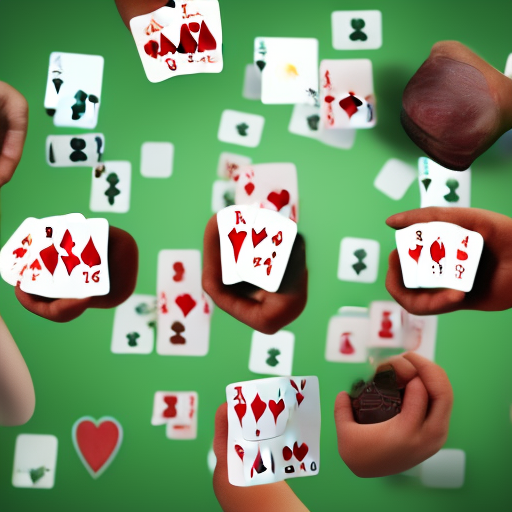Do you know how to bluff your way to success in poker? If not, you could be missing out on a great opportunity to win big. Bluffing is a key element of poker, as it can help you gain an upper hand against your opponents. Read on to learn more about the art of bluffing in poker and to find out some useful tips and strategies to help you become an expert at the game.
Strategies for Bluffing
When it comes to bluffing in poker, there are a few tried-and-true strategies that can help increase your chances of pulling off a successful bluff. Here are some tips to keep in mind next time you’re thinking of bluffing at the poker table:
– Gauge your opponents: Before attempting to bluff, take some time to observe your opponents and their tendencies. Are they aggressive or passive? Are they easily intimidated or more confident in their hand? This information can help you decide when and how to bluff effectively.
– Keep a straight face: One of the key elements of successful bluffing is not giving any indication of your true intentions. Be sure to maintain a calm and neutral expression throughout the hand, regardless of whether you’re bluffing or not. Avoid fidgeting, sweating, or any other behaviors that might tip off your opponents.
Remember, bluffing is not a guaranteed strategy, and it should be used judiciously. By following these tips, however, you’ll be better equipped to bluff effectively and add an element of surprise to your poker game.
Timing Your Bluffs
One crucial aspect of bluffing in poker is timing. You don’t just randomly bluff whenever you feel like it. You need to pay attention to the current game situation, the kind of opponent you’re playing against, and your own hand strength. just right is what can separate the novice players from the experts.
When you’re playing poker, don’t just focus on your own cards. Keep a watchful eye on your opponents’ actions as well. If you notice that someone seems to be hesitant to bet or raise, take that as an opportunity to bluff them. By testing their confidence, you may be able to scare them off and take the pot without having to reveal your own hand. However, just like you shouldn’t bluff too often, you also shouldn’t make it too obvious. Be sneaky and observe their behavior closely, so you can decide when the time is right to push your bluff.
Telling Bluff Tells
When it comes to bluffing in poker, one aspect to keep in mind is how to spot your opponent’s bluff tells. Bluff tells are subtle cues that a player gives off when they are trying to deceive their opponents. Here are some of the most common bluff tells to look out for:
– Excessive talking: If your opponent suddenly starts talking more than usual or is trying to distract you with small talk, chances are they are bluffing. They might be trying to divert your attention from the cards they’re holding.
– Lack of eye contact: If your opponent avoids making eye contact, it could be a sign that they are lying. They might be nervous, which can cause them to look away or fidget.
– Breathing patterns: When bluffing, people tend to breathe differently. If your opponent’s breathing becomes heavier or more rapid, that could be a sign that they are bluffing.
It’s important to keep in mind that bluff tells are not always reliable indicators. Some players are very good at hiding their tells, or might even be intentionally trying to mislead you. However, being able to spot these cues can give you an advantage at the poker table. So, keep your eyes peeled and observe your opponents’ behavior closely.
Bluffing in Specific Situations
Have you ever found yourself in a situation where you’re playing poker and you want to bluff, but you’re not sure how to do it tactfully? Don’t worry – you’re not alone. Bluffing in poker can be tricky, but when you get it right, it can be a game-changing move. Let’s dive into some specific situations where bluffing can come in handy.
First up, we have the “late position” bluff. This is when you’re the last person to act in a round of betting. The idea behind this bluff is that you’re hoping everyone else will check, giving you an opportunity to make a big bet and scare your opponents into folding. Of course, this only works if you’ve been playing conservatively up to this point – if you’ve been betting big all night, your opponents are less likely to believe you’re bluffing. So, save this move for when you’re in a tight spot and need to shake things up.
Another situation where bluffing can be useful is when you’re up against a player who likes to call a lot. You know the type – they seem to have a bottomless pit of chips and they’re not afraid to use them. One way to bluff against this kind of player is to make a small bet, then follow it up with a larger bet on the next round. This gives the impression that you’re feeling confident in your hand, which might make your opponent think twice before calling your bluff. Just be careful not to overdo it – if you make too many small bets, your opponent might catch on and call you out. Remember, bluffing is all about strategic timing and calculated risks. Poker is a great game that promotes creativity and strategy and encourages players to think on their feet. Learning the fundamentals will ensure you can keep up with any other player at the table, and understanding how to bluff competently will help you make the most of the opportunities around you. Good luck and may the best hand win!